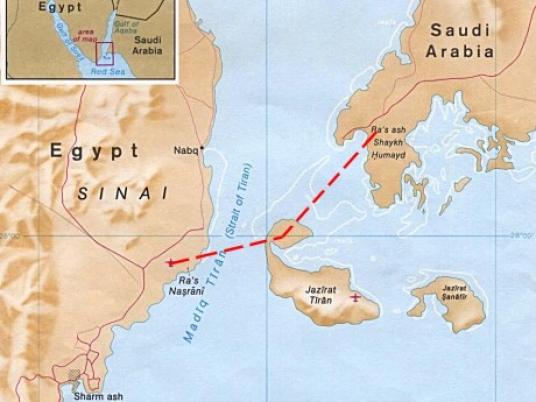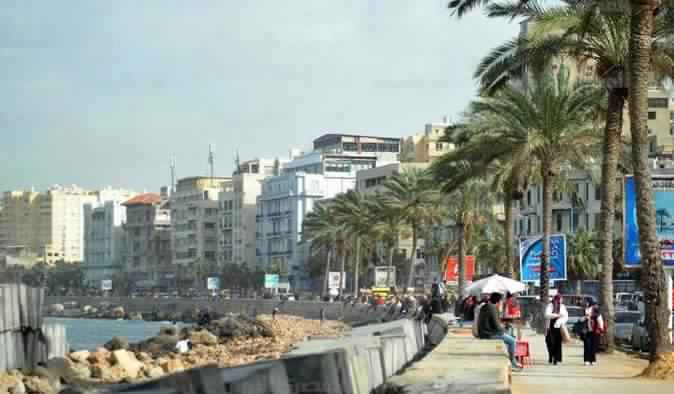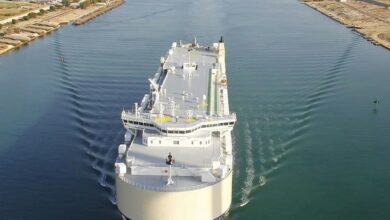
The proposed causeway linking Saudi Arabia to Egypt could seriously damage the Red Sea’s marine life and disrupt communities in South Sinai, say environmental experts, who are calling for an independent body to conduct an environmental impact assessment before the project goes ahead.
While the project is hailed as a much-needed cash injection for Egypt’s struggling economy, the environmental cost could be high.
Earlier this month, there were conflicting reports in local media that Egypt and Saudi Arabia’s governments were finally moving ahead on a project to build one of the world’s largest bridges over the Red Sea, connecting the Sinai Peninsula with Saudi Arabia. While the bridge would offer the tens of thousands of yearly pilgrims to Saudi Arabia a faster, simpler way to travel, it may also have huge consequences for the Red Sea’s ecosystem.
According to Christian Voolstra, the head of coral reef genomics at the Red Sea Research Center at the King Abdullah University of Science and Technology, sediments from construction, or drilling in the sea flow, could impact water quality, which would in turn affect the coral reefs and seagrass bed. Dust, littering, smog, noise and traffic pollution, as well as an increased risk of accidents or spills, all threaten the ecosystem.
For Voolstra, any damage to the coral reefs is likely to result in a general decline in marine life. Sea mammals may avoid the area due to noise pollution.
According to Al-Masry Al-Youm, the Transportation Ministry plans to conduct technical studies on the causeway, which may serve almost a million passengers and pilgrims annually. The report quotes an unnamed ministry source as saying that an additional 100,000 vehicles are likely to cross the bridge each year.
While the exact placement of the bridge remains unclear, it’s likely that the project will pass through three protected islands, including Tiran Island, and meet the shore at the resort city of Sharm el-Sheikh in South Sinai. Tiran, a protected island that acts as a breeding ground for birds and sea turtles, is surrounded by coral reefs and often hosts a population of the threatened dugong, a marine mammal similar to a manatee.
“The island won’t be an island; it will be a land connection and some bird species breeding will be disturbed. Services, such as gas stations, will be built and you basically lose one of the lands that is an important breeding site for seabirds,” says Sherif Baha El Din, one of Egypt’s leading bird experts and the president of Nature Conservation Egypt.
Egypt has a history of sacrificing natural beauty for the sake of economic gains. For Baha El Din, Ain Sokhna's “haphazard planning” has meant that city’s summer homes and resorts sit next to industrial factories.
With easier access to Saudi Arabia, it’s likely that industrial ventures would see Sinai as a convenient location for exporting to the Gulf Cooperation Council market.
“The industry doesn’t suffer, but the tourism next to it does. Setting Sharm el-Sheikh with a backdrop of industrialization is going to be negative,” he adds.
In the port city of Damietta, a fertilizer factory was temporarily shut down earlier this year after protesters claimed that pollution from the plant, which sits only a couple hundred meters from a middle-class neighborhood and schools, has devastated local fish stocks and agriculture. Critics say residents were not consulted about the construction of the factory, which was built in 2008 by the state-owned Misr Oil Processing Company (MOPCO) and Agrium, a Canadian fertilizer company.
For the project to be successful, Baha El Din says, the government must have the local population on board. While the causeway may bring more tourists to Sinai from Saudi Arabia, Baha El Din is quick to point out that the bridge is likely to harm the natural beauty that draws millions to Sinai each year.
“These [long-term] impacts are unknown, and could be quite substantial,” says Baha El Din. “It goes beyond the actual bridge itself.”
According to the conservationist, a large-scale project could drastically alter the governorate, and the demands on certain resources.
“For example, Saudi Arabia could be interested in the extraction of marble, and while in the Sinai it’s a free-for-all ― easy access, cut up the Sinai and ship it over to the other side,” he says. “Loose regulations on one side and more strict regulations on the other could create an imbalance or abuse of natural resources.”
According to Baha El Din, Egypt has environmental protection laws that are often poorly enforced.
He is quick not to dismiss the project as a “disaster” but insists the present environmental impact assessments are merely rubber stamps on large-scale projects.
For Voolstra, it’s important that an independent organization conducts an environmental impact assessment, as well as set up parameters of what is the minimum amount of protection, or the maximum amount of impact a project can have to “avoid irreversible change.” He adds that any environmental protection measures should be considered within the context of the overall cost of the project.
“Furthermore, they should assess the costs if no actions to preserve environment are taken,” he says. “Usually it costs a hundred times more to restore than to preserve.”




